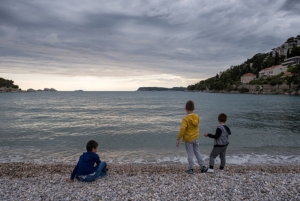Eliminating Child Poverty in Croatia: Successful Efforts
 Croatia is located in the southeast of Europe within the Balkan Peninsula and the U.S. recognized its independence in 1992. Child poverty in Croatia has been a significant issue in the country for quite some time and many families felt the negative impacts of the six-year recession that struck in 2008.
Croatia is located in the southeast of Europe within the Balkan Peninsula and the U.S. recognized its independence in 1992. Child poverty in Croatia has been a significant issue in the country for quite some time and many families felt the negative impacts of the six-year recession that struck in 2008.
Socio-Political Background
The Croatian government worked with the EU, eventually becoming a member in 2013. Since then, the quality of life has shifted for Croatians altogether, and the country has worked hard to promote a way for everyone to grow and succeed equally. The EU has developed plans specifically for children and their caregivers in hopes that no child is denied any opportunities based on social and economic status. The government of Croatia is also prioritizing the alleviation of child poverty through various initiatives.
In 2010, the percentage of Croatians under 18 years old living below the poverty line had reached a record high, according to the World Bank. Since then, the country has put many efforts in place to reduce these numbers. In the years moving forward, Croatians experienced a steady decrease in the percentage of those living under the poverty line.
The COVID-19 pandemic caused a slight increase in poverty levels, but the numbers have since reduced substantially. Not only has the country reduced all types of poverty, but the specific attention to children has helped give Croatian children and their families better opportunities. As of 2022, 18.4% of the population of Croatians under the age of 18 faced the risk of poverty and social exclusion.
The European Child Guarantee
Adopted in 2021, The European Child Guarantee aims to ensure every child in Europe has access to the same opportunities in life. It focuses on children who are at risk of poverty and social exclusion. This includes free education and health care as well as sufficient housing and healthy nutrition.
The Croatian government has explicitly been working toward decreasing the poverty rates among those under 18 years old. In the Croatian government’s plan, the aim is to address hidden costs within education and provide free meals at school. It is also a goal to provide health care services at home and housing allowances to foster-care families. The Croatian government also hopes to enhance the social mentoring system for caregivers in need.
Croatia’s Child Guarantee National Action Plan is run by a committee assigned to ensure this plan is being properly implemented. The country encouraged children to participate in this planning process and share their opinions. The well-being of children has been a top priority within the government, which has been a huge factor in decreasing child poverty in Croatia. So far in four countries including Croatia, the program has reached more than 30,000 children and 16,000 caregivers.
EU Strategy on the Rights of a Child
In Europe, children’s rights have been a growing topic of discussion throughout the years. The EU Strategy on the Rights of a Child aims to ensure that children feel that they have rights within their country and don’t experience violence or exclusion. Like the European Child Guarantee, the plan included the input of more than 10,000 children.
Each year, Croatia holds an annual conference to track the successes of the rights of a child. In 2024, this strategy will be evaluated with the expectation that it has provided steady benefits and ensured that all children are being treated fairly, according to National Plan Overview.
Child Benefits
The economy in Croatia has seen its ups and downs during and after the pandemic. The country provided various stimulus packages over the past two years to alleviate pressures on families. It has also worked hard to help individuals obtain steady incomes. The government made loan programs more accessible to those in need and extended many loan repayment deadlines. Additionally, families can apply to receive a stipend for each child they are providing for. The amount awarded can continue every month until the child reaches adulthood.
Looking Ahead
Croatian authorities have made significant efforts to address poverty and prioritize the well-being of youth, particularly by targeting child poverty in Croatia. The implementation of the European Child Guarantee has played a crucial role in providing equal educational opportunities for all children, while also ensuring access to free education and healthcare. Child benefits have offered crucial support to parents in navigating the challenges of the post-pandemic economy. As a result of these government initiatives, child poverty rates in Croatia have shown a steady decline, and there is an expectation that this positive trend will continue in the future.
– Alesandra Cowardin
Photo: Wikimedia
